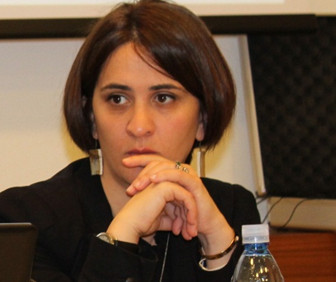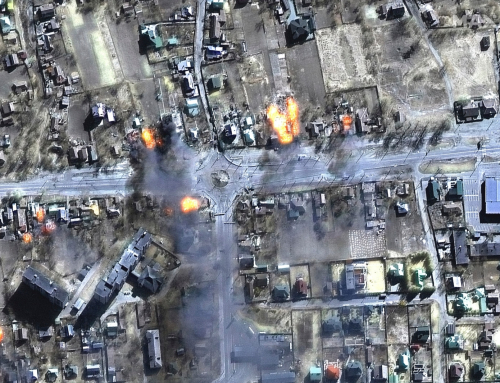
Nino Evgenidze is Executive Director of the Economic Policy Research Center.
In 2015 Armenia became a full-fledged member of the Russian-led Eurasian Customs Union (ECU). Georgia, on the other hand signed Association Agreement (AA) and the Deep and Comprehensive Free Trade Area Agreement (DCFTA) with the European Union. In light of this new regional divergence, and two different choices that one region has made, it is important to examine economic implications for Georgian-Armenian relations. In the paper we shall discuss implications for Georgia through three main channels: trade, foreign direct investments (FDI) and remittances.
To start with trade, in the first 10 months of 2014, 10 percent of the exports were to Armenia making it the second biggest export country for Georgia after Azerbaijan, so far this year. However this large number is somewhat misleading: according to Armenian Statistics Office, which distinguishes imports by country of origin and by country of consignment, majority of Georgian exports to Armenia represent re-exports. It is obvious that Georgia over the last decade has become an important transit country for Armenian imports, although Georgian products per se represent on average 1.23 percent of total imports entering Armenia. Despite that the two countries are evidently going different ways by joining different trade associations, this most likely will not have an adverse effect on either, since Georgia is important for Armenia mainly as a transit country. On the other hand, should the trade diminish, this will have no significant effect on Georgian trade balance, since the decrease in exports to Armenia will be mostly offset by similar decline in imports to Georgia.
The negative impact on Georgia of Armenia joining ECU will come mostly through effect on auto re-exports from Georgia to Armenia, which is expected to take a massive dive, given the cost of importing cars in Armenia is predicted to rise significantly. In 2013 automobiles were the largest re-export product from Georgia to Armenia. Approximately 120.5 million USD worth of automobiles went to Armenia, comprising 38 percent of total exports from Georgia. The new tariffs are going to affect not only bilateral trade and auto-dealers, but also the interests of Armenian consumers. The exact details shall be known next year, however, according to the Deputy Finance Minister of Armenia Suren Karajyan, Armenia will continue to levy it current duty on import of cars after the entry into the Union. That said, the auto re-export from Georgia to Armenia will take a massive dive during the exemption period. The situation with car re-exports from Georgia to Kazakhstan developed similarly after the latter joined the ECU. However, export to Kazakhstan was mostly low, with a huge jump in 2011 and equally rapid drop in the next year, whereas car exports to Armenia are characterized by a very steady growth since 2009. Thus, in case of Armenia Georgian auto dealers are losing a bigger market.
The largest impact on Georgian-Armenian trade will come from the new tariffs that are set to increase for the trading partners exporting to Armenia, from outside the ECU, once ECU agreement is set into action. Currently the tariffs applied by Armenia are one of the lowest among the WTO countries. 73 percent of the lines are duty free in Armenia and majority of the other lines have 10 percent tariff quotas applied to them. The MFN (Most-favored-nation) rate is 2.7 percent while in the ECU it was 7.6 percent in 2013, 6.9 percent in 2014, and will be 6 percent in 2015.
When it comes to remittances, Armenia has never been a particularly important source of remittance inflows, with the highest recorded share reaching 3 percent in mid-2008. It has, however, counted for a relatively significant share of outflows, averaging around 3 percent of outflows for the past three years. This indicates increased importance of Georgia for Armenia, although the level of remittances from Georgia is still negligible, compared with Russia.
The third channel in 2013, FDI from Armenia was 3.6 million US dollars, a 37 percent decrease from 5.9 million US dollars during the previous year. FDI from Armenia has not only been insignificant but from 2007 through 2011 the Armenian businesses were pulling capital from Georgia, what can also be seen from the FDI figure in 2011 which was around 12.3 million US dollars. The largest share of the FDI from Armenia went into construction in 2009, however during the next two years the Armenian investors were actually pulling their capital from that sector. The largest share of the FDI in 2012 and 2013 was received by the manufacturing industry, with over 1.2 million US dollars together for both years. In 2014, however, the largest sector in terms of the FDI from Armenia was hotel and restaurant industry, with around 523 thousand US dollars in foreign investments. According to the data from 2009 through 2014, the Armenian investors pulled much more capital from Georgia than invested, FDI being -23 million US dollars during that period.
In short, implications can be divided into short and long run ones. In the short run, trade between the two countries will certainly take a hit, especially for Georgian exports given the higher fixed trade tariffs Armenia will have to establish. Georgian products which still will be imported by Armenia will certainly be more expensive for the Armenian consumer and therefore less competitive. The motor car exports to Armenian are already set to decrease considerably, which accounts for the biggest part of Georgian exports in general and also in that country. Diminishing Armenian market means that Georgia will have to find its substitute elsewhere, to avoid negative effects on the economic growth.
In the long term, risks are mostly political – given Russian “crawling” expansion in the countries of former Soviet Union, Georgia can expect more political pressure in the coming years, particularly given that it will be somewhat surrounded with the ECU. Russia will certainly try to force an uninterrupted land connection with Armenia and the most important pressure point will be the reopening of Abkhazia railway. Georgian government must stand strong and prevent this from happening by any means possible.





Leave A Comment
You must be logged in to post a comment.